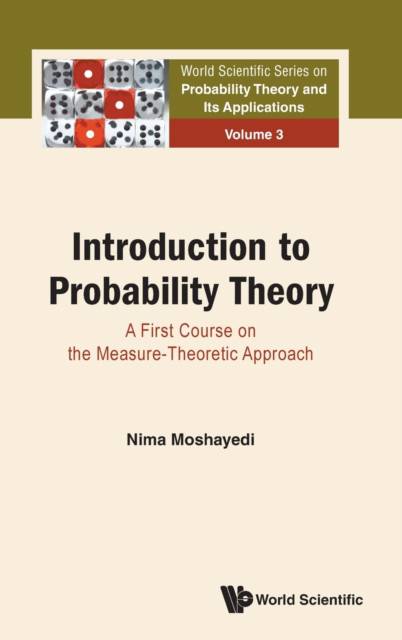
- Afhalen na 1 uur in een winkel met voorraad
- Gratis thuislevering in België vanaf € 30
- Ruim aanbod met 7 miljoen producten
- Afhalen na 1 uur in een winkel met voorraad
- Gratis thuislevering in België vanaf € 30
- Ruim aanbod met 7 miljoen producten
Zoeken
Introduction to Probability Theory: A First Course on the Measure-Theoretic Approach
Nima Moshayedi
€ 134,45
+ 268 punten
Omschrijving
This book provides a first introduction to the methods of probability theory by using the modern and rigorous techniques of measure theory and functional analysis. It is geared for undergraduate students, mainly in mathematics and physics majors, but also for students from other subject areas such as economics, finance and engineering. It is an invaluable source, either for a parallel use to a related lecture or for its own purpose of learning it.The first part of the book gives a basic introduction to probability theory. It explains the notions of random events and random variables, probability measures, expectation values, distributions, characteristic functions, independence of random variables, as well as different types of convergence and limit theorems. The first part contains two chapters. The first chapter presents combinatorial aspects of probability theory, and the second chapter delves into the actual introduction to probability theory, which contains the modern probability language. The second part is devoted to some more sophisticated methods such as conditional expectations, martingales and Markov chains. These notions will be fairly accessible after reading the first part.
Specificaties
Betrokkenen
- Auteur(s):
- Uitgeverij:
Inhoud
- Aantal bladzijden:
- 292
- Taal:
- Engels
- Reeks:
Eigenschappen
- Productcode (EAN):
- 9789811246746
- Verschijningsdatum:
- 21/04/2022
- Uitvoering:
- Hardcover
- Formaat:
- Genaaid
- Afmetingen:
- 152 mm x 229 mm
- Gewicht:
- 557 g

Alleen bij Standaard Boekhandel
+ 268 punten op je klantenkaart van Standaard Boekhandel
Beoordelingen
We publiceren alleen reviews die voldoen aan de voorwaarden voor reviews. Bekijk onze voorwaarden voor reviews.








